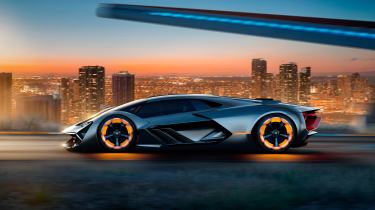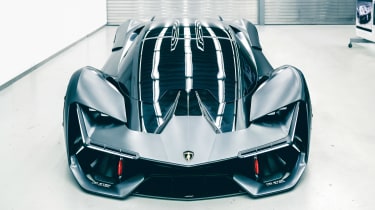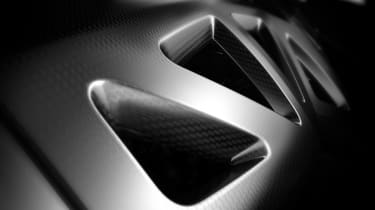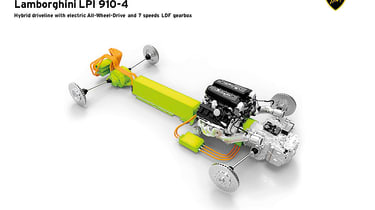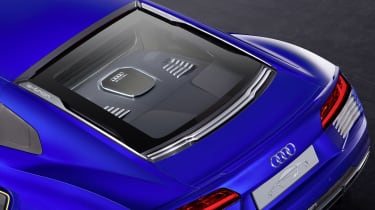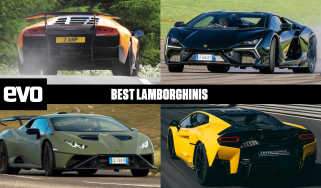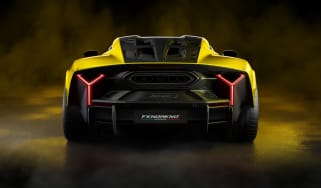How Lamborghini will save the supercar
Supercar manufacturers face the biggest test of all in a future without naturally aspirated power. Lamborghini thinks it has the answer
If anyone should have a plan to save the supercar, it’s Lamborghini. When you’re almost universally credited with creating the genome of the species, and can list Miura, Countach, Diablo, Murciélago, Aventador, Gallardo and Huracán in your back catalogue, it’s only natural that the car world’s eyes should fall on you to offer a solution to a vexing problem: just how will the supercar, that ultimate symbol of consumption, 20th-century excess, and toxic, noisy emissions, survive in the antiseptic, electrically charged world of the mid-21st century?
Lamborghini’s plan encompasses both short-, mid- and long-term strategies, and driving it all is a wish to understand what it is that drives customers to buy its cars, and moreover, just what exactly captures the imagination of fans, young and old.
> Top 10 best new supercars to buy today
At the head of this quest is Stefano Domenicali. A familiar face from his time on the Formula 1 pit wall wearing a red shirt, the avuncular, unconventionally charismatic and inspiring CEO believes his company is in a unique position.
In the short term, he knows that Lamborghini connects with people in a manner that few rivals, if any at all, can match. ‘The average age of our buyers is getting younger [38-39 years – a fall here is the holy grail of car companies] and I see our brand as more complementary to Ferrari than a rival,’ says Domenicali. ‘I think we are a younger, cooler, more sporty brand than Ferrari, but of course I respect Ferrari very much – I was there 23 years.
‘For me, the big task is to manage the passage from the traditional to the future,’ he continues. By that he means Lamborghini’s older buyers, who love the big engines, the noise and all the excess, and a younger audience who will undoubtedly be more willing to accept a new interpretation of the supercar.
The complication is that those same young people are also engaged in a way that other brands just can’t equal: ‘I ask myself why is it that young people love Lamborghini [on social media, for example] but not new cars? This is what we need to understand. I have teenagers [his own children] that can advise me – although I don’t always listen!’
What should an electric Lamborghini sound like?
One crunch point is the noise, or rather the lack of it with an electric vehicle. ‘Just two months ago I launched a working group to investigate what a non-combustion-engine Lamborghini should sound like, still linked to the technology that powers it, but not a fake noise. Young people live with music in their ears – that’s something we need to remember when investigating this sound. It is an incredible challenge, and one that at the moment I don’t have an answer for.’
What he does have answers for is how to retain the old and attract the new: ‘We will only adopt new technology when it is ready.’ That means those big-capacity, naturally aspirated V10s and V12s will stay, for now, because their bombast and noise is so much a part of what a Lamborghini is. In fact, so committed to this cause is Lamborghini that engineering chief Maurizio Reggiani exclaims: ‘As long as I am technical director we will make naturally aspirated sports cars.’
Step one: hybrid technology
The bridge to alternative power sources will be hybridisation, which will enable retention of the naturally aspirated engines and also provide increased torque to further boost performance and offset weight. ‘The problem of emissions is not related to the size of the engine, it is the way we manage the combustion,’ explains Reggiani. ‘Fuel consumption and CO2 is related, but this is why we’ll introduce the hybrid, and our target will be Euro7.’
It will all begin with the next generation of Lamborghini super sports cars, as Domenicali explains. 'The next Aventador will be hybrid, with a V12. A decision is made on that and this is something that will keep us different from the others and this is very important.' The eventual replacement for the Huracan is also in line for the hybrid treatment. 'We can discuss what would be the right engine for the future for the Huracan. Of course, V10 would be the first priority but we have the time to discuss it'.
Then there is the possibility of a fourth Lamborghini model to join the next Aventador and Huracan, as well as the Urus, using Lamborghini's hybrid technology. Domenicali confirms that the brand is considering, 'when it would be right to have another model in our portfolio, to have an extended dimension. Sure, we can see the potential of it'. Would this be a 4-door Porsche Panamera rival along the lines of the Lamborghini Estoque concept of 2009? 'This is still a debate, we need to listen to the customers, we need to see how the market is evolving because this is very important for us'.
Domenicali also states that the firm will have an all-electric supercar by around 2026, possibly with solid-state batteries (the recent Terzo Millennio design concept, shown over the page, hints at what it might look like), and that even fuel-cell technology is under consideration further ahead. Hybridisation, clearly, is a strategy to simply fill the gap.
The problem with hybrids, as we all know, is weight. Reggiani grimaces at the very word: ‘Weight is the big trouble I have in my life – weight and packaging. But this is a challenge for a technician, and while I don’t have an answer now, my engineers are working on this. Weight is our enemy and we fight every moment on this.’
Reggiani won’t be drawn as to whether that means a switch to all-carbonfibre tubs for the Aventador and Huracán replacements, but the inference is pretty clear that big changes will be needed: ‘Carbon, magnesium, titanium – all can provide answers. A super sports car must be as low as possible, have the weight low and a low polar moment of inertia.’
Clearly, packaging the additional hybrid components within this mandated package is a particularly acute headache. It probably doesn’t help that Reggiani knows customers are fixated on power when reduced weight would offer more palpable benefits: ‘Ten more bhp and 99 per cent [of customers] can’t tell; 10kg less and you can.’
He’s also a fan of the manual gearbox, but sees no place for it with hybrid drivetrains and massive torque outputs that would necessitate a three- or four-plate clutch that would be easy to burn.
There’s one rule above all else that guides this new era: ‘A Lamborghini is 60 per cent design, 30 per cent emotion and then the rest. Get that wrong, and it won’t sell.’ The big, bad, loud Lambo’s days are clearly far from over.
electric avenue: what Lamborghini’s rivals are doing
Lamborghini has plenty of potential rivals, even within the VW Group, although this in itself will make future technologies possible that, pre-VW, would have been unthinkable.
Porsche’s all-electric future is nearly ready with the Taycan, but a full-on electric supercar is still an unknown. However, the firm has already shown its hybrid intentions with the 918 Spyder, and introduced hybrid power for the ultimate Panamera in the form of the Turbo S E‑Hybrid. Next up will be some form of hybrid 911, introduced with the new 992 generation due later this year.
Over at Audi, its e-tron sub-brand has already been applied to the first-gen R8 in limited numbers, and with the recent e-tron Vision Gran Turismo concept the hints are getting much stronger that an all-electric Audi supercar is imminent. It all ties in nicely with the Formula E involvement, of course.
McLaren has already produced the hybrid P1, and the firm has stated that 50 per cent of its cars will have hybrid power by 2022. However, this may be a mild electric boost rather than a car capable of significant electric-only mileage.
Mercedes-AMG is currently working fervently on the incredible Project One hypercar, but the 2017 concept version of the AMG GT Coupe showed that its relatively more affordable range of performance cars will also soon feature some form of hybrid power.
Yet it’s old rival Ferrari that so far seems the closest in approach to Sant’Agata. The LaFerrari has shown the firm has the technology to fuse big-capacity, naturally aspirated engines with electric power, something that was clear way back in 2010 when the 599 HY-KERS experimental vehicle was shown. Much like its Italian rivals, Ferrari looks set to hang on to the big V12 for as long as possible by teaming it with the power of electricity.
